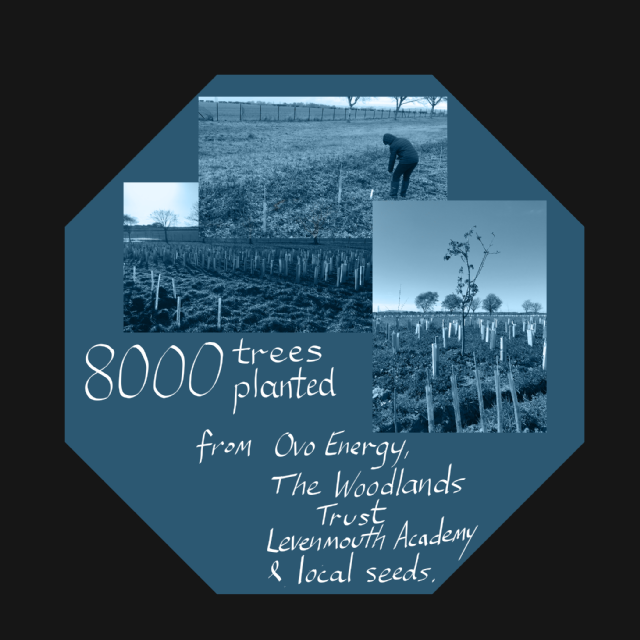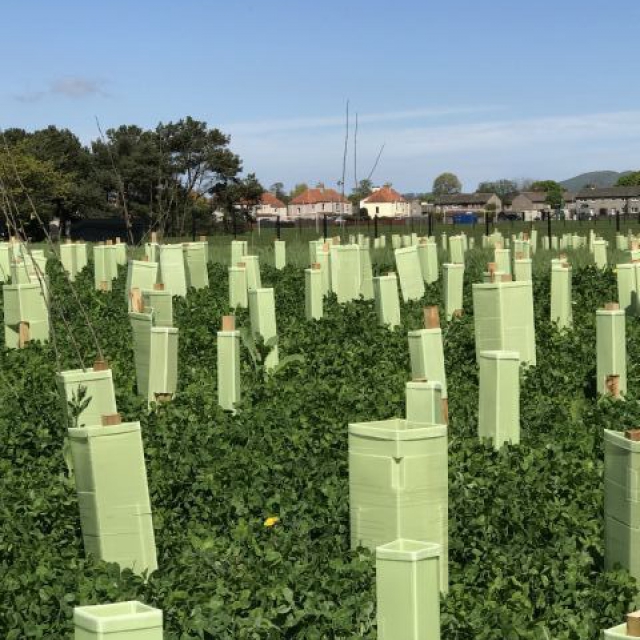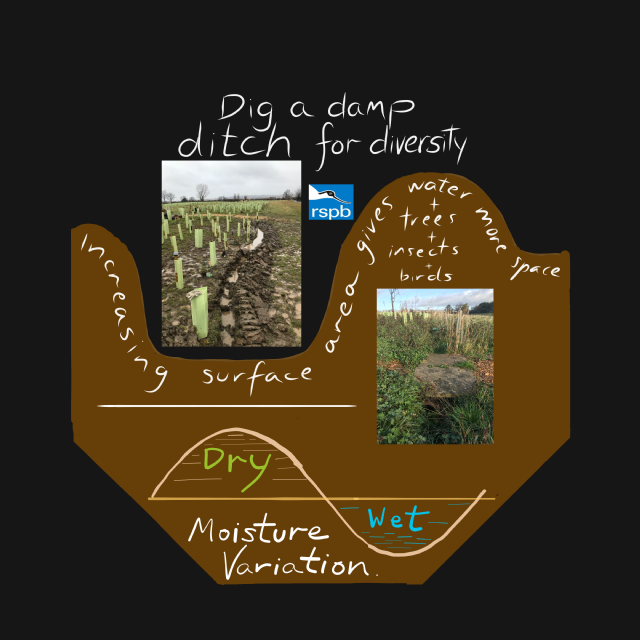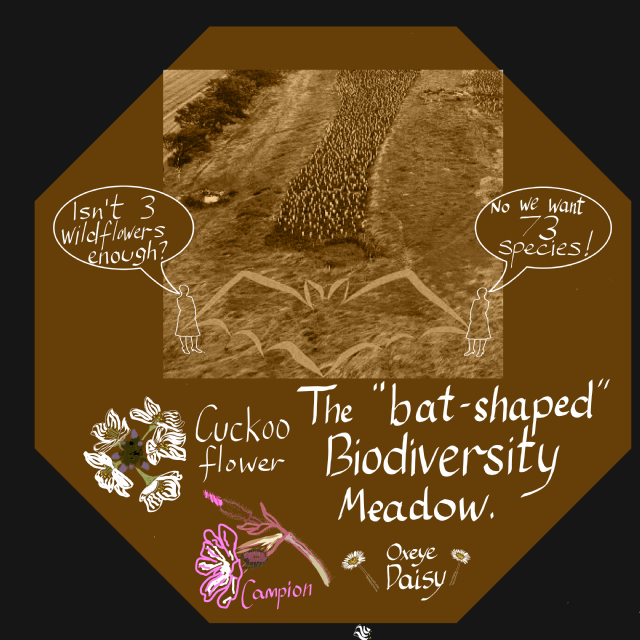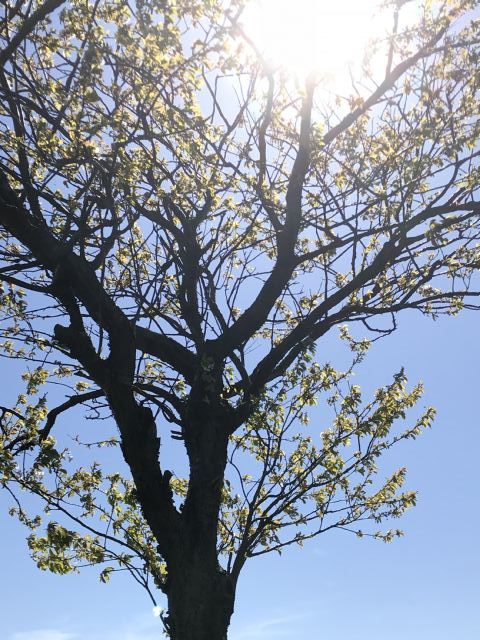Growing a beautiful woodland from playing field grass.
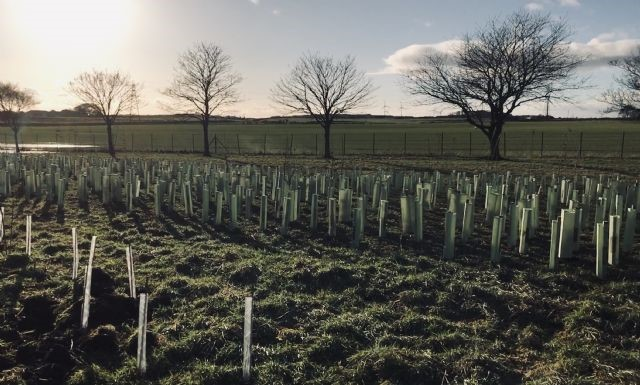
We decided that we should plant a wood. We got tree packs from lots of different sources: I Dig Trees and The Woodland Trust to name just two. At that point we had a blank canvas so we started to plant around the edges and we made a goat willow circle in the middle that eventually became the Hugel Hoop. While we were planting, a van drew up and a whole load of workmen came out and told us that part of the construction of the school involved the planting of trees. So our project got an unexpected boost, it seems that we were not the first to think about planting trees here. We also found out that nitrogen fixing clover had been sown the year before and that this would give the trees a better chance of surviving their first year.
So our tree planting jumped from 1000 trees to 8000 trees in the first year. 2017/18 was such a bad winter for rain and the freezing conditions happened at the wrong times for the young saplings. About 30% of the new trees died whether they were planted by the workmen or planted by us.
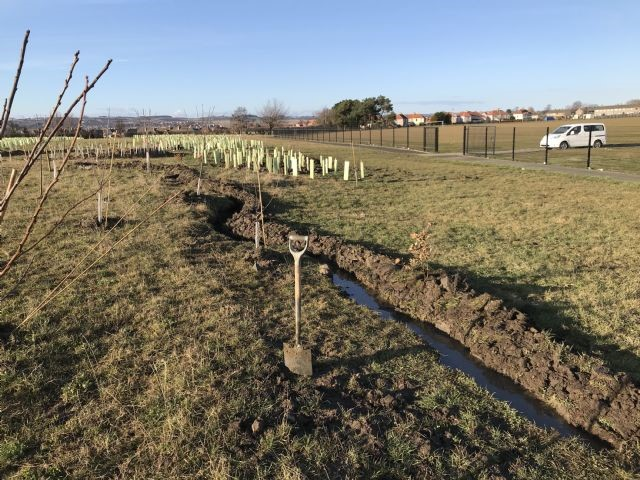
An idea about the ecological benefits (extolled by the RSPB) of digging “damp ditches for diversity” was explored in that winter. We thought that by digging small non-draining ditches we would be creating a larger surface area for wildlife, creating more variation of so many kinds: light/shade, dry/wet, humid/dry, sheltered/exposed, warmer/colder, higher/lower, drained/muddy etc… This would be a benefit for small animals who require hiding places from predators, shelter from the elements and places where hibernation is possible. We also made Frog & Toad Abodes (and yes, we have now seen toads on the site).
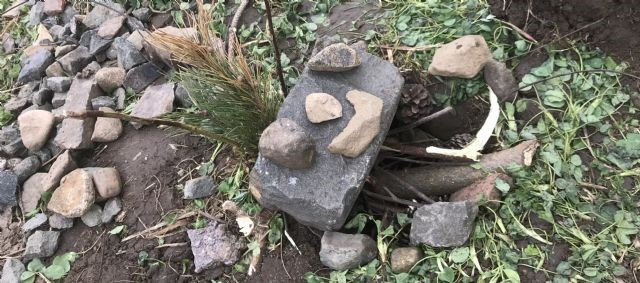
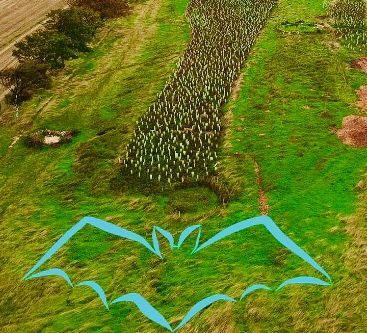
There has been serious damage caused by deer who have munched many a young tree and caused their premature demise. Plastic tree protectors are a necessary evil though it seems that the deer will always be a limiting factor on the success of any plantation until they can be effectively kept out. In the winter of 2018/19 yet more trees were planted to mitigate all the damage done by pesky deer but this time we were aided by the College who planted a few hundred. In addition, the fledgling SCIO was sourcing local trees from tree growing enthusiasts who supplied some older and better established trees which we hope will continue to grow and evade the deer.
Pupils at Levenmouth Academy, planted trees forming the outline of a bat to create what will one day be a ‘bat-shaped meadow’. Time will tell if this actually comes to pass but this idea of seeing the site from high above is part of the global thinking that environmental educators are seeking to establish. At the time of writing, the trees are obscured by the grass but there’s not reason to think that there won’t one day be the shape of a bat to be seen from space in the same way that our “Circles of Life” project will soon be visible, from space, on Google maps.
At this time last year, July 2018, Bat’s Wood was suffering from a terrible drought. The clover was high but quickly wilted away. This year, July 2019, the clover has given way to a huge stand of thistles. Seven foot high monster “jaggies” but thankfully, we’ve not had the drought. These thistles have beautiful purple flowers but the question about how the young trees are doing remains. Will the thistles hamper the young trees? An initial survey of the trees indicates that the trees are resistant enough to thistles and indeed, these monsters might even afford some protection from deer. In the places where we cut some of the thistles, the deer have evidently been chewing on the exposed trees.
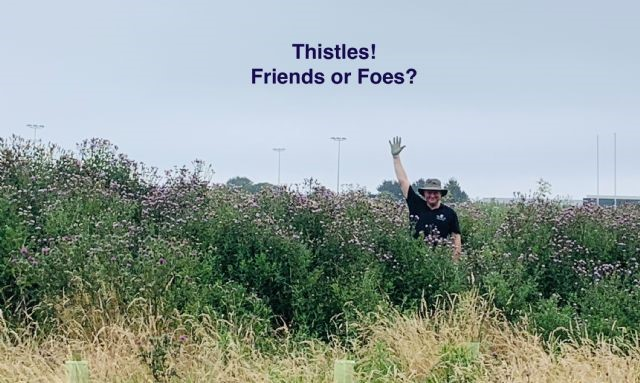
Plant a tree!!
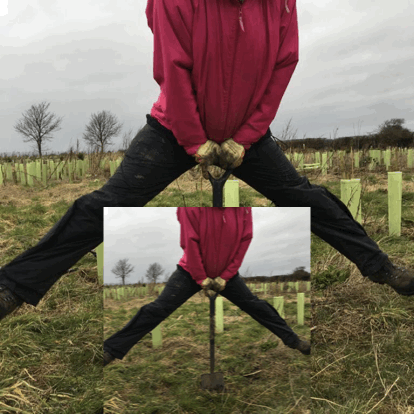
Video from 2017
